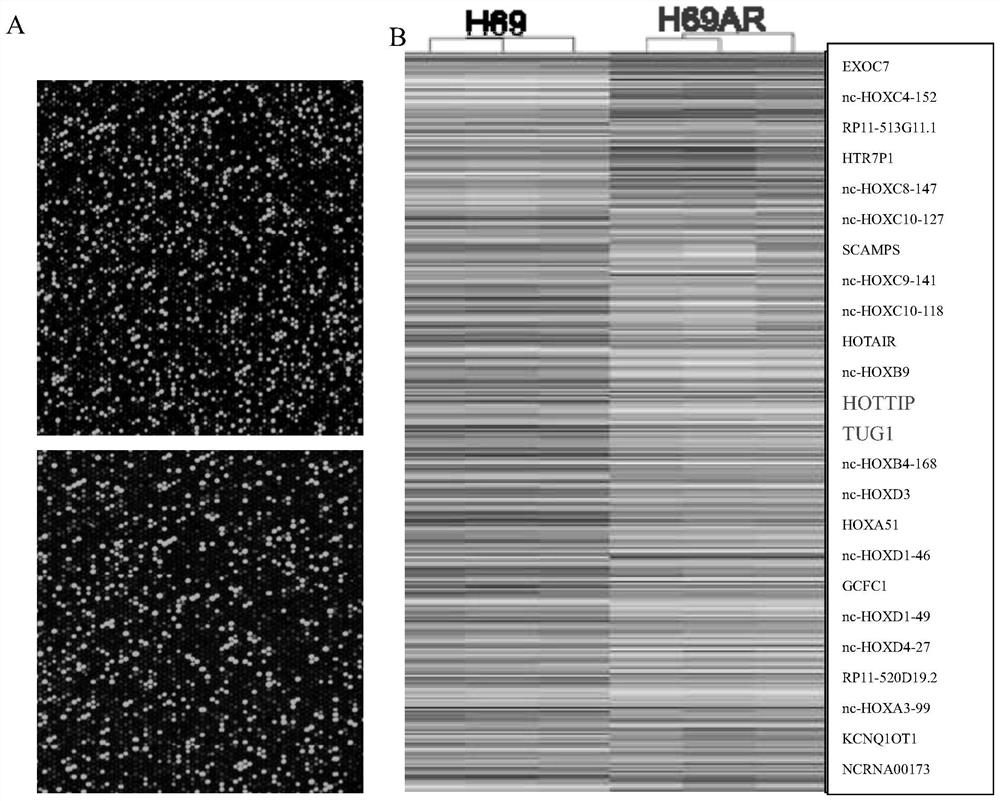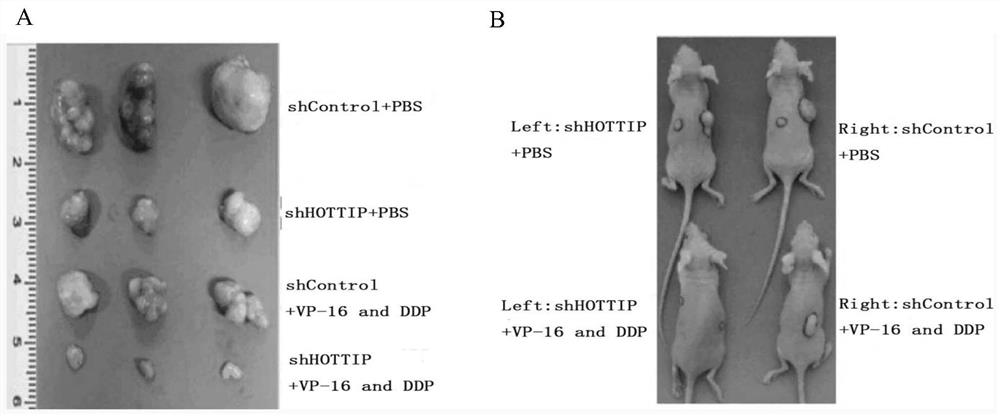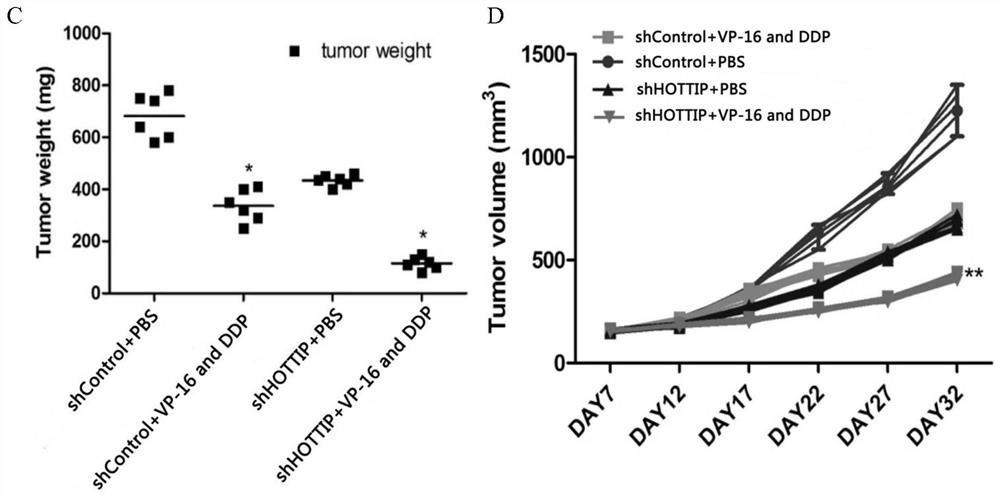A target for predicting the sensitivity of small cell lung cancer patients to chemotherapy drugs and its application
A technology for small cell lung cancer and chemotherapeutic drugs, applied in biochemical equipment and methods, microbial measurement/inspection, etc., can solve non-existent problems, achieve low cost, fast and convenient detection
- Summary
- Abstract
- Description
- Claims
- Application Information
AI Technical Summary
Problems solved by technology
Method used
Image
Examples
Embodiment 1
[0050] 1. Screening of long non-coding RNAs associated with drug resistance in small cell lung cancer cells using gene chips
[0051] method:
[0052] (1) Cell culture Small cell lung cancer cells H69 and drug-resistant cells H69AR were purchased from The American TypeCulture Collection (ATCC) in the United States, using RPMI-1640 culture medium, and the cells were placed at 37 ° C, 5% CO 2 cultured in an incubator.
[0053] (2) RNA extraction Total RNA was extracted according to Trizol instructions, the main steps are as follows: H69 and H69AR cells (1×10 7 ), add 1ml Trizol, add chloroform at a ratio of 0.2ml per 1ml Trizol solution, cover the centrifuge tube tightly, shake the centrifuge tube vigorously by hand for 15 seconds; transfer the upper layer water phase to a new centrifuge tube, add 0.5ml per ml Trizol solution Proportion of isopropanol Add isopropanol, stand at room temperature for 10 minutes, and centrifuge for 10 minutes (12000g / min). Discard the supernatant...
PUM
 Login to View More
Login to View More Abstract
Description
Claims
Application Information
 Login to View More
Login to View More - R&D
- Intellectual Property
- Life Sciences
- Materials
- Tech Scout
- Unparalleled Data Quality
- Higher Quality Content
- 60% Fewer Hallucinations
Browse by: Latest US Patents, China's latest patents, Technical Efficacy Thesaurus, Application Domain, Technology Topic, Popular Technical Reports.
© 2025 PatSnap. All rights reserved.Legal|Privacy policy|Modern Slavery Act Transparency Statement|Sitemap|About US| Contact US: help@patsnap.com



